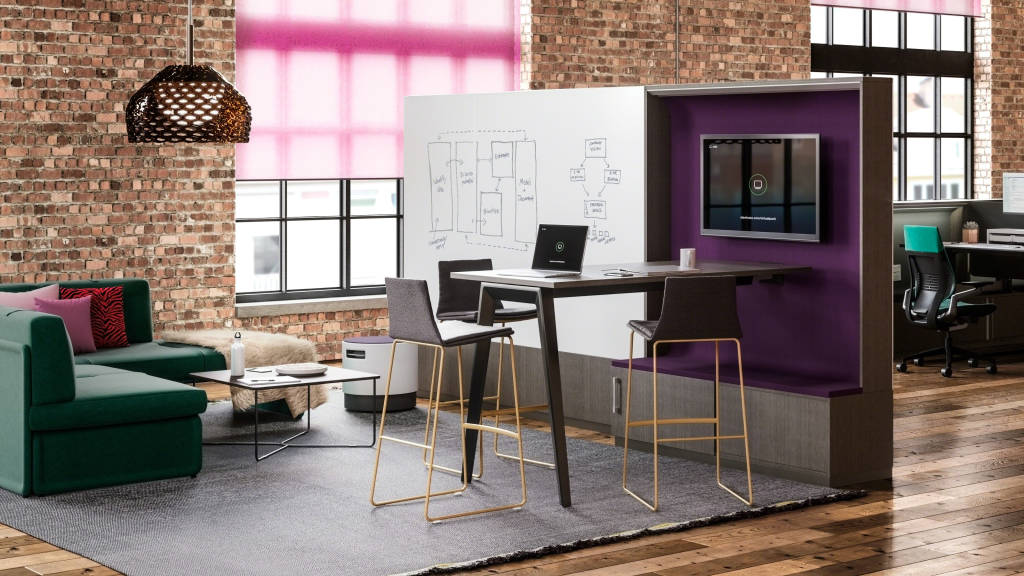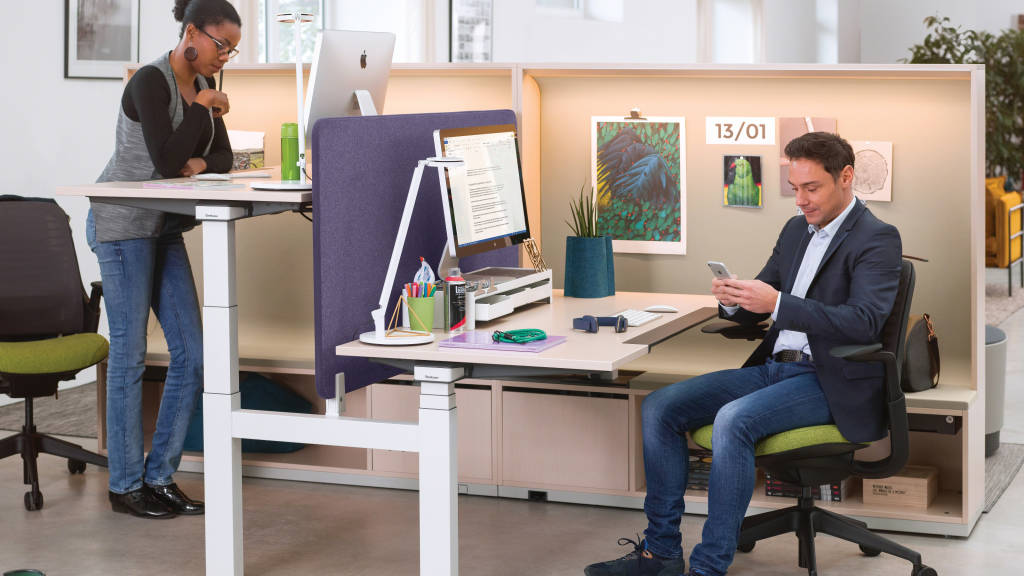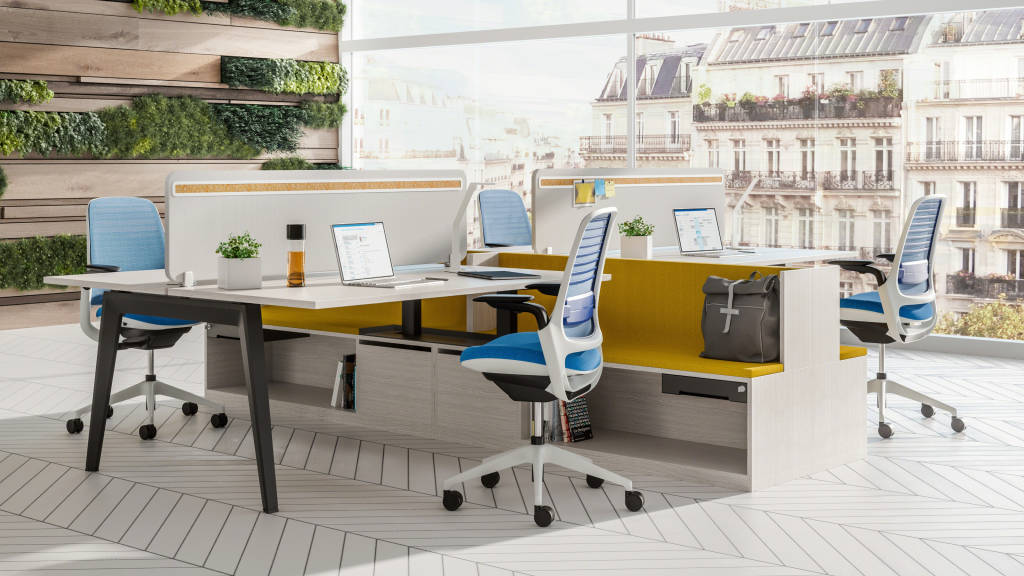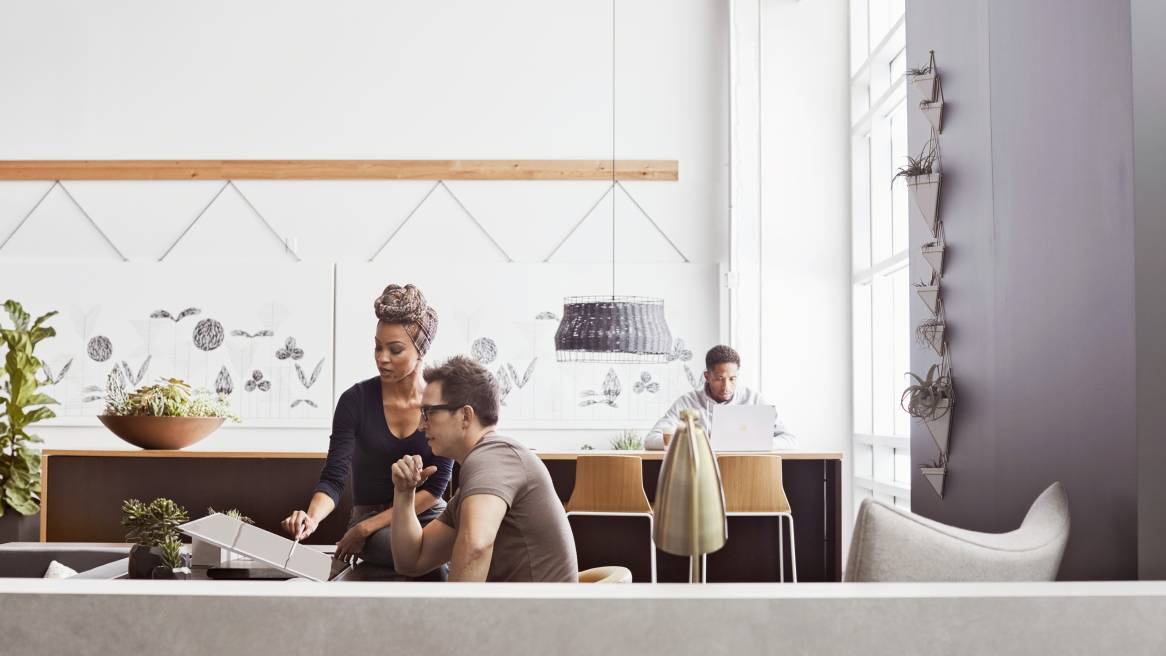Balancing Privacy and Connection in the Office
Share It Collection gives you the best of both worlds
Every three minutes — it’s likely how often you are distracted at work. With millions of stimuli coming at us every day, from the red notification icon on your email, Instagram and Facebook to the loud co-worker next to you taking a phone call, we are bombarded with distractions. You may think that you’re able to focus after becoming so accustomed to these interruptions, but research from the University of California found that once your attention is breached, it can take as much as 23 minutes for the mind to return to what it was focused on.
How much does disruption cost?
These disruptions in the open-plan office cost more than your productivity; they cost companies billions per year. Gallup’s State of the Workplace study found that every year disengaged workers cost the United States $450–550 billion, while the United Kingdom and Germany pay €52–70 billion and €112–138 billion respectively. Engagement and the Global Workplace, Steelcase’s study in collaboration with global research firm IPSOS, surveyed workers in 17 countries and found that globally, only 13 percent of workers are highly engaged and highly satisfied. This leaves millions of disengaged workers who are unsatisfied with their workplace and do just enough to get by, but certainly don’t put in the effort needed for creative collaboration and thus, innovation — the ingredient to relevance in today’s digital age.
Globally, workers are overwhelmed. It can be so distracting in an open work environment that you feel you can’t think straight. Or, the library effect can strike — workers in the open plan may feel the need to be painstakingly quite if no one else is making noise. The vibe of a library negates all of the benefits of the open-plan office — collaboration, a sense of belonging and connection with team members and accessibility to others.
The open plan and its good intentions
And, let’s not forget why the office has transformed over the last several decades. The emphasis on collaboration that started to boom in the 90s with the tech industry is even more critical in today’s workplace considering the speed at which business takes place and the rise of new tech developments like AI. This push for collaboration, creativity and team environments, coupled with the rising cost of real estate led to an increase in open-plan workplaces. Steelcase’s Workspace Futures teams researched privacy by surveying, interviewing and observing workers in North America, Europe and Asia. Like most things in life, the solution to the privacy epidemic isn’t more doors, it’s balance.
“A key takeaway from our study is that the open plan isn’t to blame any more than reverting to all private offices can be a solution. There is no single type of optimal work setting. Instead, it’s about balance. Achieving the right balance between working in privacy and working together is critical for any organization that wants to achieve innovation and advance,” explains Donna Flynn, director of Steelcase’s WorkSpace Futures research group.
Share It Collection balances the benefits of the private office with the open plan

So, how do you create the balance between privacy and connection that workers crave? Integrating elements of wellbeing into the open plan, such as shelter and privacy, an array of spaces and atmospheres to work from and social areas that bring co-workers together, all express to employees that their emotional, cognitive and physical needs are considered. Steelcase’s Share It Collection communicates these values by creating neighbourhoods that welcome individuals and teams to a customizable experience, where they feel comfortable to interact, share and focus.
Share It Collaborative Elements create destinations in the open plan by defining space so teams can create together without distractions. Integrated technology and whiteboard surfaces provide teams the tools they need to work together without disconnecting them from their environment. Team storage provides a place for items everyone needs access to, while an acoustic shroud adds additional privacy so teams can collaborate without worry of disrupting others.

Another engagement strategy is to give workers choice and control over their experience. Steelcase’s global report found that as the amount of choice and control over where to work increased, so did engagement, with 88 percent of highly engaged and highly satisfied workers saying they have control over how they work. The Share It Workstation provides workers with the option of a height-adjustable desk, lighting options, visual privacy and secure storage so they can step away from their desk with peace of mind.

Share It Collection brings the benefits of the private office into the open plan. Companies that implement this balance will reap the benefits of highly engaged and highly satisfied workers, increasing wellbeing and their bottom line. And maybe, our short attention spans will stand a chance — at least until the next red notification pops up.


